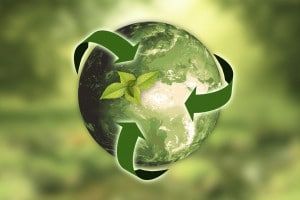Eco-Friendly Ideas for Your Interior Design Business

Have you heard about eco-friendly movements? Are you looking for ways to integrate environmentally sustainable practices into your business? Are you interested in creating a more sustainable footprint with your interior design business?
Your interior design business undoubtedly does enough good for many people. However, you can as well extend this help to the environment. Taking the smallest of changes in your business structure can help to reduce the negative impacts on the environment. Below are a few ways you can infuse your business systems and design processes with eco-friendly efforts:
Sustainable Sourcing
Consider some factors when looking for sources for eco-conscious products. These factors include but are not limited to low-impact production, the use of non-toxic or upcycled materials, and ethical manufacturing. Furthermore, source vintage pieces and include recycled or reused materials whenever possible.
Reach out to and work with companies committed to environmentally sustainable design. There are many good options for sourcing finishes and products for your business. Be sure to source them from eco-conscious companies that offer several products like eco-friendly fabric . Moreover, work with vendors that invoke your aesthetic and utilize them when sourcing products for your clients.
Digitize Your Business
Start by moving all your files and client proposals to a digital space. Doing this will reduce clutter in your office space and minimize the need to use paper for filling and writing proposals. In the same vein as all your client proposals, creating digital media kits is also a good idea. Here, people like the media, investors, potential clients, and others can find information about your business. You can also invest in digital databases and other relevant software.
You can also create a user-friendly website for your business where clients can book and make orders for your services online. Again, you will help reduce the use of paper.
Additionally, create design presentations with sustainability in mind. Do away with printing images and creating a traditional mood board. Instead, create interactive PDFs with options like hyperlinks and present them on an iPad.
Rethink Your Install Day
Your install day probably comes with lots and lots of boxes that eventually end up in a landfill. You can help lessen the impact on the environment by utilizing old boxes to repackage all the items for install day. Alternatively, you can invest in reusable containers that you can use for all your client installs.
Ensure Your Receiving Warehouse Is Sustainable
In a case where you are using a receiving warehouse for shipping your clients’ products, you should ensure that they practice sustainability. For example, ensure that they recycle or compost all the cardboard your clients’ furniture and other products come in. Doing this will push further your eco-friendly initiatives for your business.
Reduce, Reuse and Recycle Your Waste
Ensure you implement waste management strategies in your interior design business to promote sustainability. You can start by providing sorted recycling bins in all your spaces. Then, educate your employees, if any, on the proper ways of recycling waste. Moreover, encourage your employees to avoid using disposables and use real utensils and cutlery within the office.
Conclusion
As you can see, most of the eco-friendly ideas above are tangible and easy to implement. Moreover, they are simple such that you can start implementing them today. You can help move to a sustainable and eco-friendly impactful industry by simply digitizing systems, sustainability strategies and being more thoughtful about how you consume your supplies.


